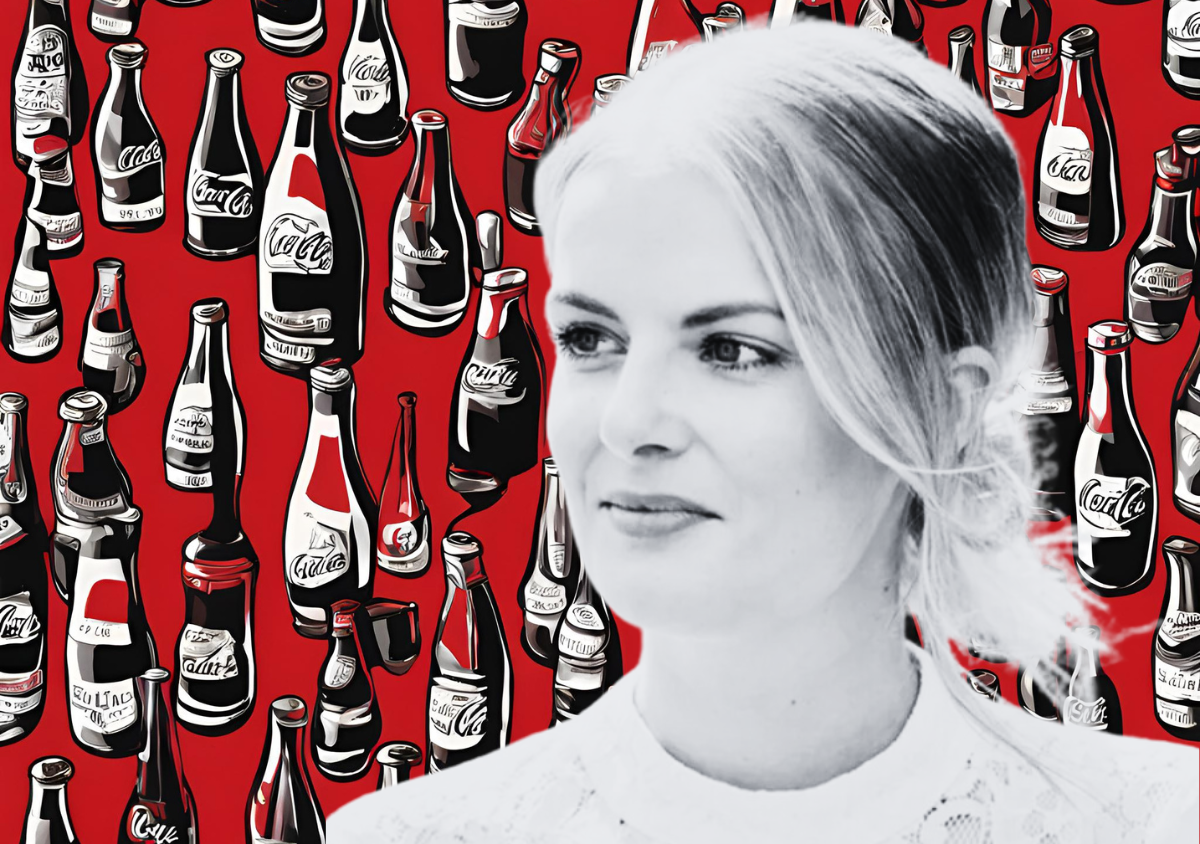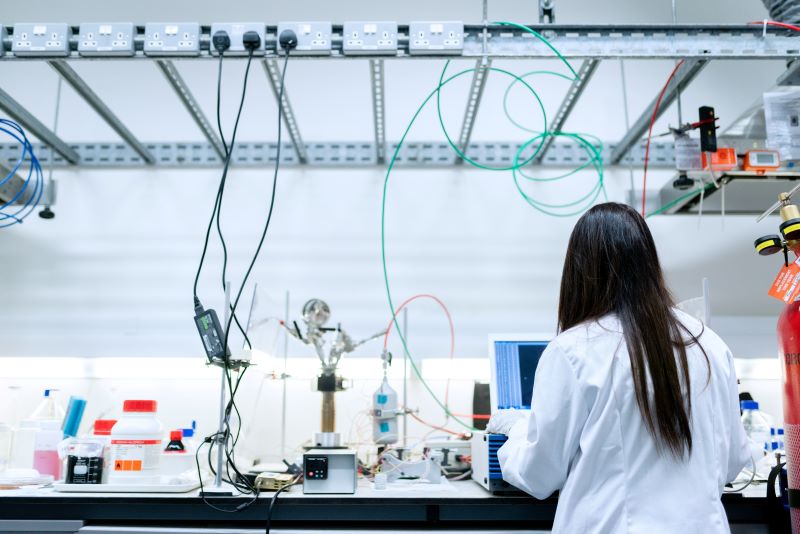The global drinks brand invests in early-stage startups and academic research where it can get closely involved in testing out the technologies at its operations.

Incremental changes aren’t going to help Coca-Cola reach its 2040 carbon reduction targets. Instead, it is going to require a much more dramatic technology shift — some of which may not have been invented yet, says Nicola Tongue, associate director at CCEP Ventures, the corporate venturing arm of Coca-Cola Europacific Partners.
“We’re looking for tech that isn’t necessarily ready to deploy today. But, if we can help develop it and build it by 2040, it should have a really significant impact on helping us reach our net zero commitments,” says Tongue. She is part of a small three-person venturing team at the world’s most iconic beverage company that scouts for investments that will help the sprawling, global drinks brand achieve its goal of reaching net zero by 2040.
To find those investments, Tongue isn’t looking for mature technologies that are close to commercialisation. Instead, she scouts technologies that often haven’t even received funding yet. These technologies, at pre-seed and seed stages, are still experimental, existing in research labs at universities across the world.
Early-stage technology wasn’t always the investment focus for Coca-Cola. When the Europe-based ventures unit was set up five years ago, it did traditional CVC, focused on later stage investments. A lot of these were in digital, e-commerce companies.
“A lot of it is quite moonshot, high risk. But, if it is successful, it is really high impact.”
Nicola Tongue, associate director, CCEP Ventures
But two and half years ago the company shifted its investments entirely to technologies that help it reach its carbon emissions reduction goal. The rationale behind the move was the business had become better at digital innovation, while its aim to reach the net zero goal is still far off and requires some very innovate technologies to reach.
“We’ve made some ambitious net zero commitments, and the more that started to be mapped out, the more we realised how difficult that is going to be,” says Tongue.
The company has hundreds of people working on sustainability initiatives, such as installing solar panels, electric fleets and electric boilers. But, even if it implemented all the sustainability activities it knows how to do, it only gets the company to a 30% emissions reduction.
“There was an acknowledgement that someone must be inventing something. There must be something out there in the pipeline that can help us, and we need to find it and help bring it to market and help nurture it and make sure we can work with it,” says Tongue.
Those technologies are in areas such as enhanced plastics and wastewater recycling, direct carbon capture, mapping the genomes of sugar for cutting down on fertiliser and water consumption, and harvesting latent electricity in the air to help power cooling technology.
“A lot of it is quite moonshot, high risk. But, if it is successful, it is really high impact,” she says.
Her venturing unit, CCEP Ventures, represents Coca-Cola’s European and Asia Pacific region. The division equates to a third of the world’s Coca-Cola volume and is the largest bottler of Coca-Cola. The business is involved in the entire production of beverages, from sourcing raw materials to manufacturing and distributing Coca-Cola products, which include several well-known brands such as Sprite, Fanta and Schweppes.
CCEP Ventures, which invests off the parent company’s balance sheet, has 15 investments in its portfolio. The ventures team takes equity stakes in early-stage startups and also sponsors academic research. It is also a limited partner in a $137.7m sustainability fund managed by venture capital firm Greycroft, along with several other of Coca-Cola’s bottling companies. The fund invests in later-stage companies with more mature technologies.
The venture team’s portfolio may seem small for such a large company – it does between three and four investments a year – but Tongue emphasises that the venturing arm is truly strategic in its goals and will only invest in a company or academic research that it can support with its own infrastructure and expertise.
A technology that Tongue is particularly excited about is direct air capture. The team has made two investments in this sector. One is in UK-based Airhive, an Imperial College London spinout that has developed a rapidly scalable technology to capture carbon from the atmosphere. As part of its investment in March this year, it entered an agreement with the startup to pilot the use of Airhive’s direct air capture system at one its facilities.
The other direct air capture investment is in ZeoDac, a spinout from US university Georgia Institute of Technology. The startup uses molecular sieves to remove CO2 from the air.
As a fizzy drinks maker, the ability to source carbon dioxide from the air rather than from burning fossil fuels to carbonate its drinks would be a game changer for the company.
Embedding CO2 in plastic packaging
It is also looking at using captured CO2 to make plastic drinks bottles. Depending on how regulation evolves, embedding CO2 this way may be counted as carbon negative, or at least carbon neutral.
The ventures team worked with French startup Fairbrics, a technology that recycles CO2 for use in sectors such as fashion, chemical manufacturing and packaging. The startup creates plastic bottles from captured CO2 as an alternative to bottles made using virgin plastic from fossil fuels.
The ventures team has also looked at technologies that reduce emissions from ingredients that go into its beverages. It has sponsored research at the University of Berkeley, California, for example, which is looking at how to create sugar from captured CO2.

“If sugar can be made from captured carbon dioxide, you could end up with a situation where you significantly reduce the carbon footprint associated with the sugar in our drinks.
“There weren’t any companies at the time that we could invest in that were doing that. It’s really still fundamental research,” says Tongue. “But we decided we could invest in this research, and they’ve had some promising results. We’re discussing what comes next, now that the initial project is coming to an end.”
Working with startups and academic researchers so early in their development means the investment involves an element of venture building.
The team has worked with venture builder Deep Science Ventures to explore new technologies it can deploy in its operations. It is collaborating with the venture builder on a project to create more sustainable sources of water in regions where drought is common.
In some cases, it has sponsored academic research projects where the technology cannot turn into a commercial venture but the ventures team has learned from the experience. Other times it has seen how viable startups have emerged that have overtaken academic research.
The ventures team prefer to work with academic researchers who are seeking their first fundraising round. It recently made such an investment in Pipeline Organics, a developer of higher efficiency enzymatic biofuel cells to generate renewable energy from wastewater.
Working with PhD students
Pipeline Organics’ founders studied at the University of Nottingham in the UK. The ventures team made contact through Conception X, an organisation that works with PhD students in the UK to help build ventures from their academic research.
The Pipeline Organics investment was ideal for the ventures team because it could get involved early on in helping to deploy the technology at its sites. “This is where it is most exciting: They are ready to do something with their technology, and we can not only help with funding we can also put them into contact with our manufacturing sites, which are going to let them test their equipment there.”
Scouting for cutting-edge academic research can be difficult because the ventures team has to go to each individual technology transfer office at universities. In many ways, universities remain siloed in their tech transfer activities. There are few examples of one-stop-shopping for industry to access academic research. This is why CCEP Ventures likes to work with the likes of Conception X, which works with academic founders across the UK on a diverse range of deeptech ventures.
Tongue also sits on the investment committee of Matcelerate Zero, a partnership of six UK research-led universities and global companies to develop commercial ventures in materials science. “It is a nice initiative because they’re looking at how you can bring industry leaders in to see if innovation or research could translate into something that industry really needs,” she says.
It can also be a challenge for the ventures team to work directly with university tech transfer offices because they sometimes take large equity stakes in spinouts, although many are easing up on their requirements. “I know some universities that take up to 50% of a startup’s shares, and that makes it really difficult for a traditional investor to come in.
“Where academics have innovation that isn’t linked directly to the university, or the university has a more friendly spinout policy, they often find it easier to raise funding,” says Tongue.
With such moonshot technologies in its portfolio, the startups may take years to turn into an exit. This is the reason the team invests off the parent corporation’s balance sheet. It has given the team the flexibility to look at multiple technologies and invest on a case-by-case basis.
“We have really strong leadership support. The business really gets behind the fact that these technologies could represent our future,” says Tongue.











